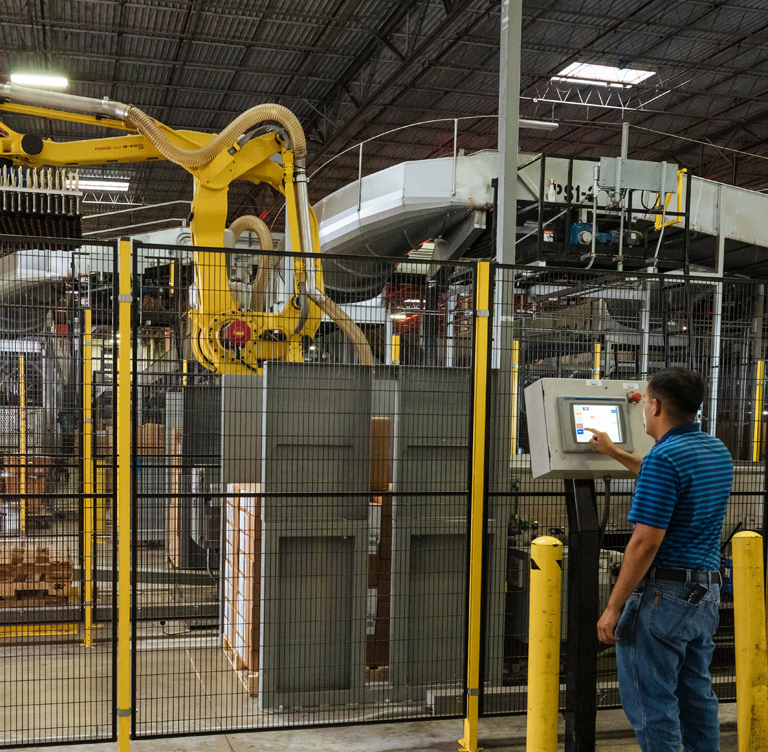佐治亞州亞特蘭大
UPSNav optimizes entire routes, providing turn-by-turn directions to loading docks and other preferred delivery and pickup locations
UPS (NYSE:UPS) today said it has integrated a new navigation tool called UPSNav into the handheld device its package delivery drivers carry, providing them with detailed turn-by-turn directions derived from UPS’s routing software. UPSNav reduces miles driven, fuel consumed and carbon emissions, while empowering the company to provide better service to its customers.
UPSNav is a significant update to UPS’s On-Road Integrated Optimization and Navigation (ORION), which determines the optimal order for local UPS® package car drivers to make deliveries and pickups. With the new navigation tool, ORION gives drivers directions to all those stops in precise detail – even to loading docks and receiving areas that are often on opposite sides of a building’s main entrance. UPSNav provides UPS drivers with a new level of accuracy and precision, which enables them to operate at top efficiency. It also improves the customer experience and opens the UPS platform to provide new products and services.
Drivers interact with UPSNav using the screen on their handheld DIADs (Delivery Information Acquisition Device). The DIAD mounts to the driver’s dashboard for hands-free operation and displays a map showing drivers where to turn. It emits tones to notify them when to slow for a delivery or pickup stop and exactly where to stop once they have arrived at a destination. Since 1991, UPS has developed five generations of DIADs. A sixth is in development now and will offer an even better user experience.
“UPSNav is not a conventional navigation platform like those that guide drivers in their personal vehicles from the front door of Address A to the front door of Address B,” said Juan Perez, UPS chief information and engineering officer. “UPS drivers make an average of 125 stops each day. They often drive to customer locations that are not visible from the main road or through traditionally available mapping technology. UPSNav was built for the heavy and complex UPS workload.”
UPSNav furnishes drivers with all the available information on their daily deliveries as well as the most cost-effective route between stops. It uses the UPS data infrastructure and proprietary ORION maps, which include 250 million locations. Drivers and other UPS staff also can quickly correct ORION maps or update them if a delivery or pickup point changes.
In the next iteration of ORION, due out in 2019, UPSNav will dynamically adjust throughout the day to recalculate routes, considering factors like changing traffic conditions and the remaining deliveries and pick-up requests.
UPSNav works with ORION to reduce the number of miles driven on targeted routes. ORION plus UPSNav saves the company fuel and enables drivers to complete their routes faster. UPS launched UPSNav as a pilot this fall, rolling it out to about 5,000 U.S.-based drivers and some in Canada. UPS decided to expand the use of UPSNav more broadly after the successful pilot. Drivers on lower-density suburban and rural routes saw the most improvement. The tool was especially useful for drivers who were new to their routes, but every driver saw the benefits.
“UPSNav takes a lot of the stress out of our work,” said Hunt Valley, Md.-based UPS driver Jason Dayhoff. “With this tool, I spend a lot less time hunting for addresses or loading docks.”
As with ORION, UPS developed UPSNav with in-house technology for the unique role of its delivery drivers and leveraging UPS maps.
“This is a major advancement for UPS routing and navigation technology. It’s been very impactful,” said Jack Levis, senior program director at UPS. “The routing and training efficiencies are undeniable. Our drivers now have the best suite of route optimization and navigation technologies in the industry.”
UPS has invested aggressively in its Global Smart Logistics Network, which relies on data, analytics and innovative technology to pioneer customer solutions, boost service levels and generate operational efficiencies.
The new UPSNav navigation tool is part of that effort alongside the recent deployment of the first phase of UPS’s Network Planning Tools (NPT), which use advanced analytics to help the company direct package volume more efficiently across its network and to make the best use of capacity at sorting facilities.
關於 UPS
UPS (NYSE: UPS) 於全球物流業具領導地位,提供包括包裹和貨物運輸在內的多元化解決方案,並積極促進國際貿易,善用先進技術提高商業管理的效率。總部位於亞特蘭大的 UPS 為全球超過 220 個國家和地區提供服務。The company can be found on the web at ups.com or pressroom.ups.com and its corporate blog can be found at longitudes.ups.com. To get UPS news direct, follow @UPS_News on Twitter.
Except for historical information contained herein, the statements made in this release constitute forward-looking statements within the meaning of Section 27A of the Securities Act of 1933 and Section 21E of the Securities Exchange Act of 1934. Such forward-looking statements, including statements regarding the intent, belief or current expectations of UPS and its management regarding the company's strategic directions, prospects and future results, involve certain risks and uncertainties. Certain factors may cause actual results to differ materially from those contained in the forward-looking statements, including changes in economic and other conditions in the markets in which we operate, governmental regulations (including tax laws and regulations), or our competitive environment, the fasts or assumptions underlying our health and pension benefit funding obligations, our ability to successfully negotiate and ratify of labor contracts, strikes, work stoppages and slowdowns, changes in aviation and motor fuel prices, cyclical and seasonal fluctuations in our operating results, and other risks discussed in the company's Form 10-K and other filings with the Securities and Exchange Commission, which discussions are incorporated herein by reference.


